Ever tried making fried chicken at home only to end up with dry meat and burnt coating? Trust me I’ve been there too. After countless kitchen experiments (and some pretty embarrassing failures) I’ve finally cracked the code to achieving that perfectly juicy fried chicken with a crispy, golden crust that’ll make even the Colonel jealous.
In this guide, I’m sharing all my hard-earned secrets to help you create mouth-watering fried chicken that’s crispy on the outside and incredibly juicy on the inside. Let’s dive right in!
The Secret to Juicy Fried Chicken: Buttermilk Brine
The foundation of truly juicy fried chicken starts with a proper brine Here’s why it matters
- Tenderizes the meat: The acidity in buttermilk breaks down proteins, resulting in more tender chicken
- Adds moisture: The chicken absorbs liquid during brining, helping it stay juicy during the frying process
- Enhances flavor: A well-seasoned brine infuses the meat with flavor from the inside out
My Foolproof Buttermilk Brine Recipe
- 3 cups buttermilk- 1/2 cup hot sauce (Frank's RedHot works great)- 2 teaspoons salt- 1 teaspoon black pepperIf you don’t have buttermilk on hand don’t worry! You can make your own by mixing 2 cups of regular milk with 2 tablespoons of lemon juice or white vinegar. Let it sit for about 5 minutes before using.
Pro tip: Brine your chicken for at least 4 hours, but overnight (up to 24 hours) is even better for maximum juiciness and flavor.
Choosing the Right Chicken Pieces
The type of chicken you use makes a huge difference in your final result:
- Bone-in, skin-on pieces retain more moisture than boneless cuts
- Dark meat (thighs and drumsticks) stays juicier than white meat
- Uniform size ensures even cooking
I personally prefer using a mix of thighs and drumsticks for the juiciest results. If you’re using chicken breasts, just keep a closer eye on them as they tend to dry out faster.
The Ultimate Dredging Mixture
The coating is what gives fried chicken that irresistible crunch. My secret weapon? Cornstarch! Here’s my perfect dredging mix:
- 3 cups all-purpose flour- 1/2 cup cornstarch (the secret to extra crispiness!)- 1 tablespoon salt- 1 tablespoon paprika- 2 teaspoons onion powder- 2 teaspoons garlic powder- 1 teaspoon dried oregano- 1 teaspoon dried basil- 1 teaspoon white pepper- 1 teaspoon cayenne pepper (adjust to taste)The cornstarch is the not-so-secret weapon that creates that shatteringly crisp coating. It’s lighter than flour alone and gives your chicken that perfect crunch!
How to Keep the Breading From Falling Off
Nothing’s more frustrating than watching your carefully applied breading slide off during frying. Here’s how to make it stick:
- Pat the chicken pieces dry before brining
- Let excess brine drip off completely before dredging
- Press the coating firmly onto the chicken
- Let the breaded chicken rest for 10-15 minutes before frying
- Don’t overcrowd your pan (chicken pieces shouldn’t touch)
- Only flip once during frying
This resting period is crucial – it helps the coating adhere properly and prevents it from slipping off during cooking.
Mastering the Frying Technique
Getting the frying process right is crucial for juicy chicken. Here are my top tips:
Choosing the Right Oil
There are several good options for frying oil:
- Vegetable oil (my recommendation – neutral and affordable)
- Canola oil
- Peanut oil (best flavor but more expensive)
- Safflower oil
- Corn oil
You’ll want enough oil to reach about 3/4 to 1 inch deep in your skillet.
The Perfect Temperature
This is absolutely critical! Maintaining the right oil temperature is perhaps the most important factor in achieving juicy chicken with a golden (not dark) exterior.
- Ideal temperature range: 300-350°F (150-175°C)
- Too low: Chicken absorbs too much oil and becomes greasy
- Too high: Coating burns before the inside cooks properly
I strongly recommend using a deep-fry thermometer or instant-read thermometer to monitor your oil temperature. If you don’t have one, try this test: drop a small pinch of flour into the oil – it should sizzle immediately but not burn.
Temperature management tips:
- Heat oil to 350°F before adding chicken
- Add chicken carefully to avoid temperature drops
- Adjust heat as needed to maintain temperature
- Don’t overcrowd the pan (fry in batches if necessary)
Cooking Times
Cooking times vary depending on the size of your chicken pieces:
- Thighs and drumsticks: about 14-16 minutes
- Wings: 8-10 minutes
- Breasts: 12-14 minutes (depending on thickness)
How to Tell When Chicken is Done
For juicy, safe-to-eat chicken, you need to know when it’s properly cooked:
- Best method: Use a meat thermometer! Chicken is done when it reaches an internal temperature of 165°F (74°C)
- For dark meat: Aim for 170-175°F for the juiciest results
- No thermometer? Pierce the thickest part – juices should run clear, not pink
- Last resort: Cut into a piece to check for doneness – no pink meat near the bone
Always insert the thermometer into the thickest part of the meat, being careful not to touch the bone (which will give an inaccurate reading).
Keeping Chicken Warm Between Batches
If you’re frying multiple batches, here’s how to keep the first pieces warm and crispy while you finish cooking:
- Place a wire rack over a baking sheet
- Set your oven to 200°F (93°C)
- Transfer cooked chicken to the rack
- Keep warm in the oven until ready to serve
Important: Never cover fried chicken with foil while keeping it warm! The foil traps steam, which makes the crispy coating soggy.
Troubleshooting Common Problems
Even with the best instructions, things can go wrong. Here are solutions to common fried chicken issues:
Dark Exterior, Raw Interior
This is usually caused by oil that’s too hot. Next time:
- Use a thermometer to monitor oil temperature
- Keep temperature between 300-350°F
- Consider par-cooking larger pieces (bake at 350°F for 15-20 minutes before frying)
Pale, Soggy Coating
Likely caused by oil that’s not hot enough:
- Make sure oil reaches 350°F before adding chicken
- Don’t overcrowd the pan (which drops the temperature)
- Make sure chicken is at room temperature before frying
Dry Chicken
To fix dry chicken:
- Don’t skip the buttermilk brine
- Brine longer (up to 24 hours)
- Don’t overcook – use a thermometer!
- Consider using dark meat instead of white
My Complete Juicy Fried Chicken Recipe
Now that we’ve covered all the details, here’s the complete recipe to pull it all together:
Ingredients
- 6 chicken thighs (bone-in, skin-on)
- 6 chicken drumsticks (bone-in, skin-on)
- 3 cups buttermilk
- 1/2 cup hot sauce
- 2 teaspoons salt
- 1 teaspoon black pepper
- 3 cups all-purpose flour
- 1/2 cup cornstarch
- 1 tablespoon salt
- 1 tablespoon paprika
- 2 teaspoons onion powder
- 2 teaspoons garlic powder
- 1 teaspoon dried oregano
- 1 teaspoon dried basil
- 1 teaspoon white pepper
- 1 teaspoon cayenne pepper
- Vegetable oil for frying (about 1 quart)
Instructions
-
Pat chicken pieces dry with paper towels. Trim any excess loose skin.
-
In a large bowl, combine buttermilk, hot sauce, 2 teaspoons salt, and black pepper. Submerge chicken pieces in mixture, cover, and refrigerate for at least 4 hours (preferably overnight).
-
When ready to cook, pour oil into a large heavy skillet to a depth of about 3/4 to 1 inch. Heat to 350°F.
-
While oil heats, prepare dredging mixture by combining flour, cornstarch, and all remaining seasonings in a shallow dish.
-
Remove chicken pieces from buttermilk mixture one at a time, letting excess drip off. Dredge in flour mixture, pressing coating onto chicken. Shake off excess.
-
Place 3-4 pieces of chicken in hot oil at a time (don’t overcrowd!). Fry for about 14 minutes, turning once halfway through, until golden brown and internal temperature reaches 165°F.
-
Transfer cooked chicken to a wire rack set over a baking sheet. Keep warm in a 200°F oven while frying remaining pieces if desired.
-
Let chicken rest for 10 minutes before serving.
Perfect Side Dishes for Fried Chicken
We all know fried chicken doesn’t stand alone! Here are some perfect accompaniments:
- Creamy potato salad
- Classic coleslaw
- Fluffy biscuits
- Mac and cheese
- Baked beans
- Corn on the cob
- Collard greens
Storing and Reheating Leftovers
Fried chicken is always best fresh, but leftovers can still be delicious if handled properly:
- Storage: Refrigerate for 2-3 days in an airtight container
- Oven reheating: Place on wire rack over baking sheet, heat at 375°F for 10-15 minutes
- Air fryer reheating: 350°F for 3-5 minutes (best for maintaining crispiness!)
Avoid microwaving fried chicken – it’ll make the coating soggy and rubbery.
Final Thoughts
Making truly juicy fried chicken with a perfect golden crust takes a bit of practice, but the results are so worth it! The keys to success are proper brining, careful temperature control, and not rushing the process.
I hope these tips help you create the most amazing fried chicken you’ve ever made. Once you’ve mastered this technique, you’ll never go back to store-bought or fast food fried chicken again – I know I haven’t!
Got any questions or your own fried chicken tips? I’d love to hear them in the comments below. Happy frying!

Visual Step-by-Step Guide: Batter-Fried Chicken
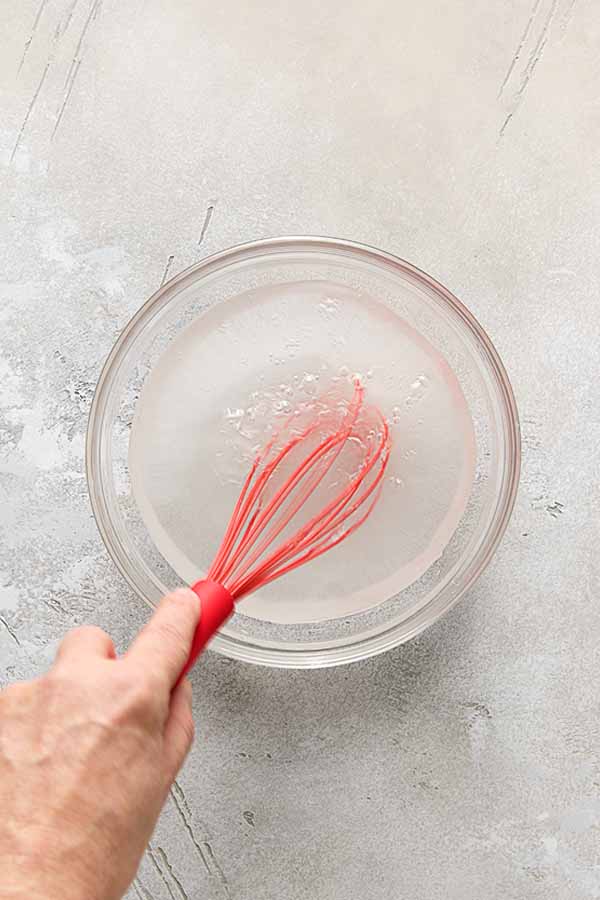
- Whisk the water, salt, and sugar in a large bowl until dissolved.
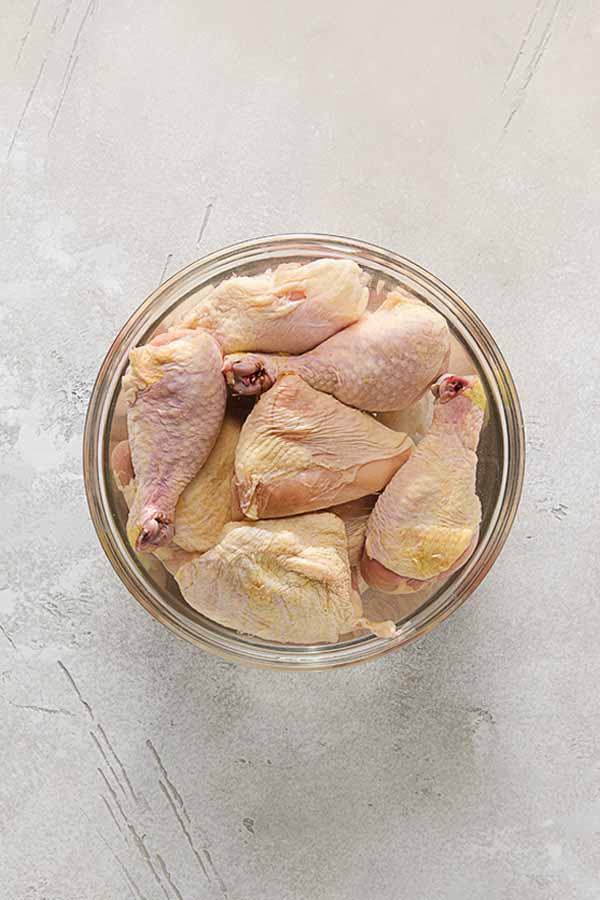
- Add the chicken, cover, and chill for 60 minutes.
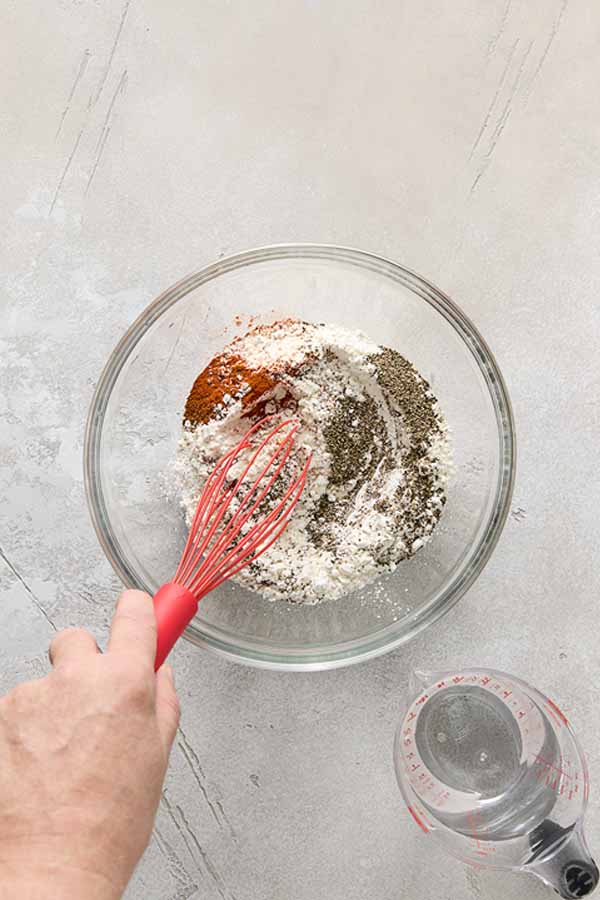
- Whisk the batter’s dry ingredients in a separate large bowl.
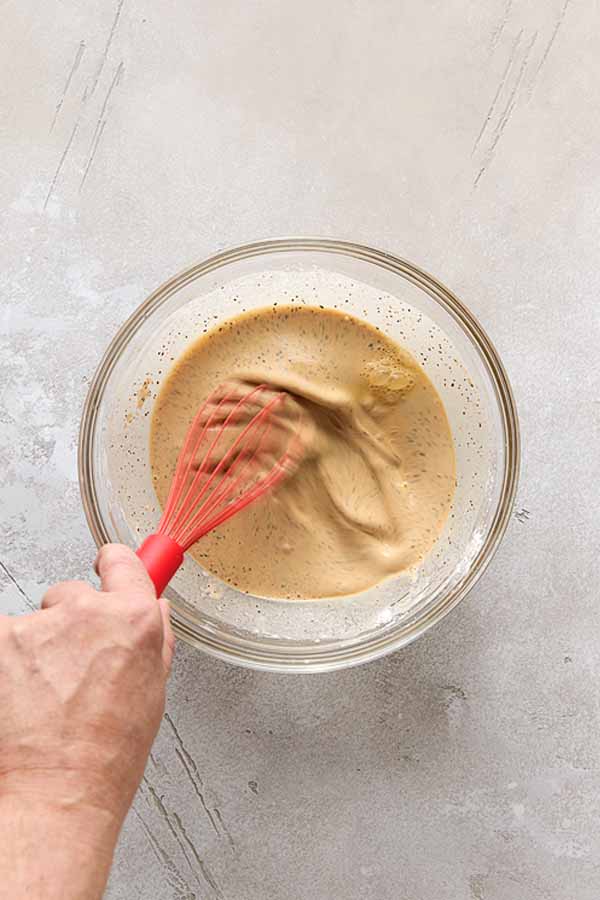
- Pour in the water and whisk until combined. Refrigerate until the chicken’s ready to cook.
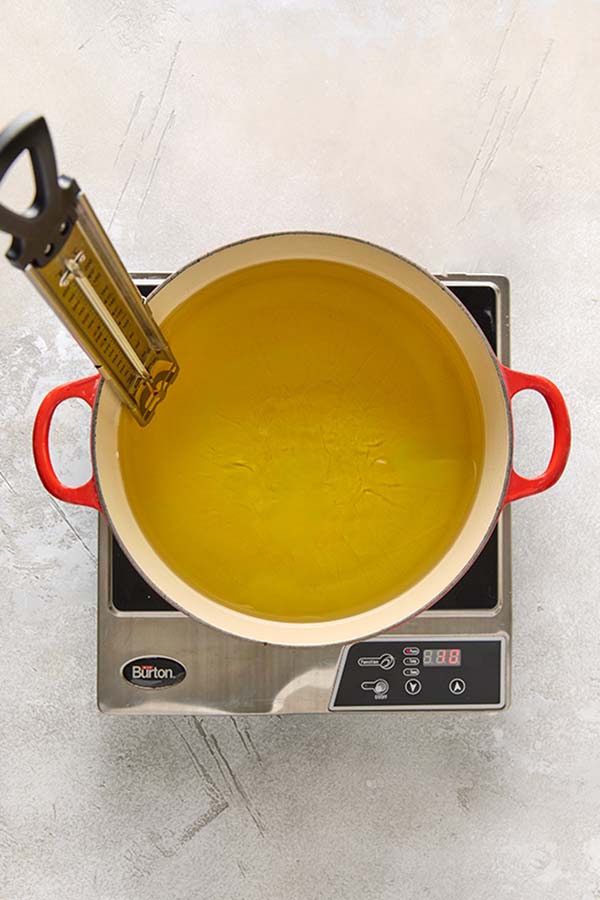
- Heat the oil in a large pot. Drain and pat the chicken pieces dry with paper towels.
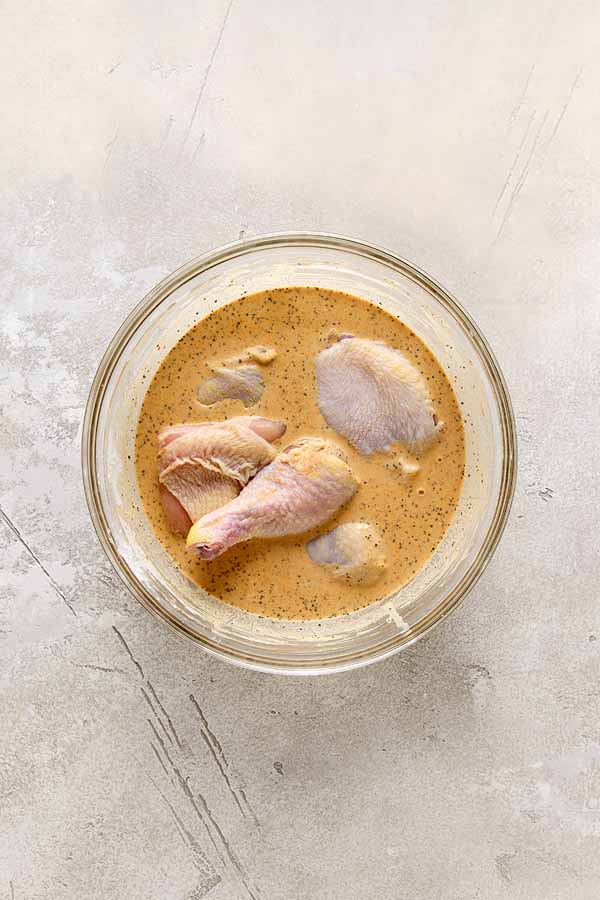
- Place half the chicken pieces in the batter and turn to coat. Remove them from the batter, letting the excess drip off.
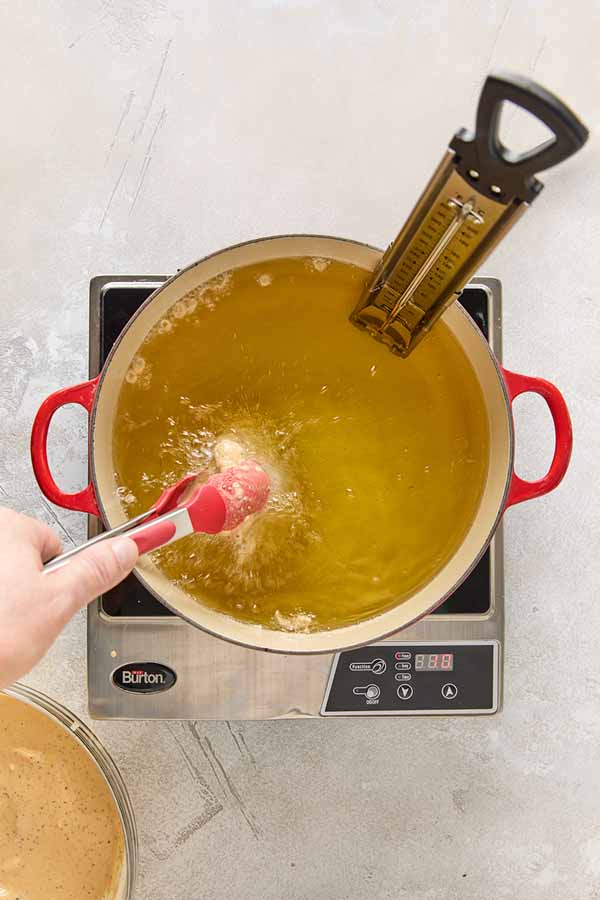
- Slip the chicken into the hot oil and fry until crispy and golden.
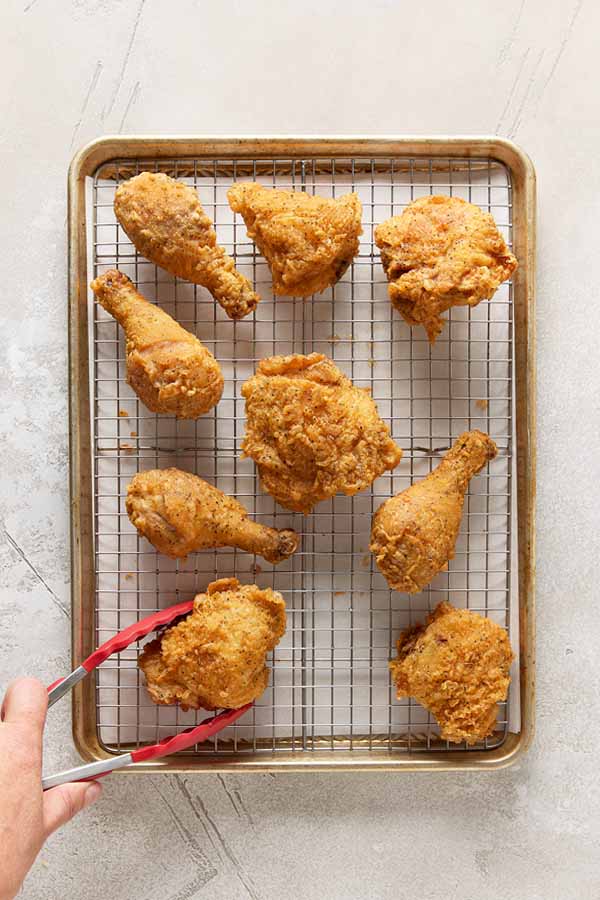
- Transfer the cooked chicken to a wire rack set on a baking sheet and repeat with the remaining chicken.
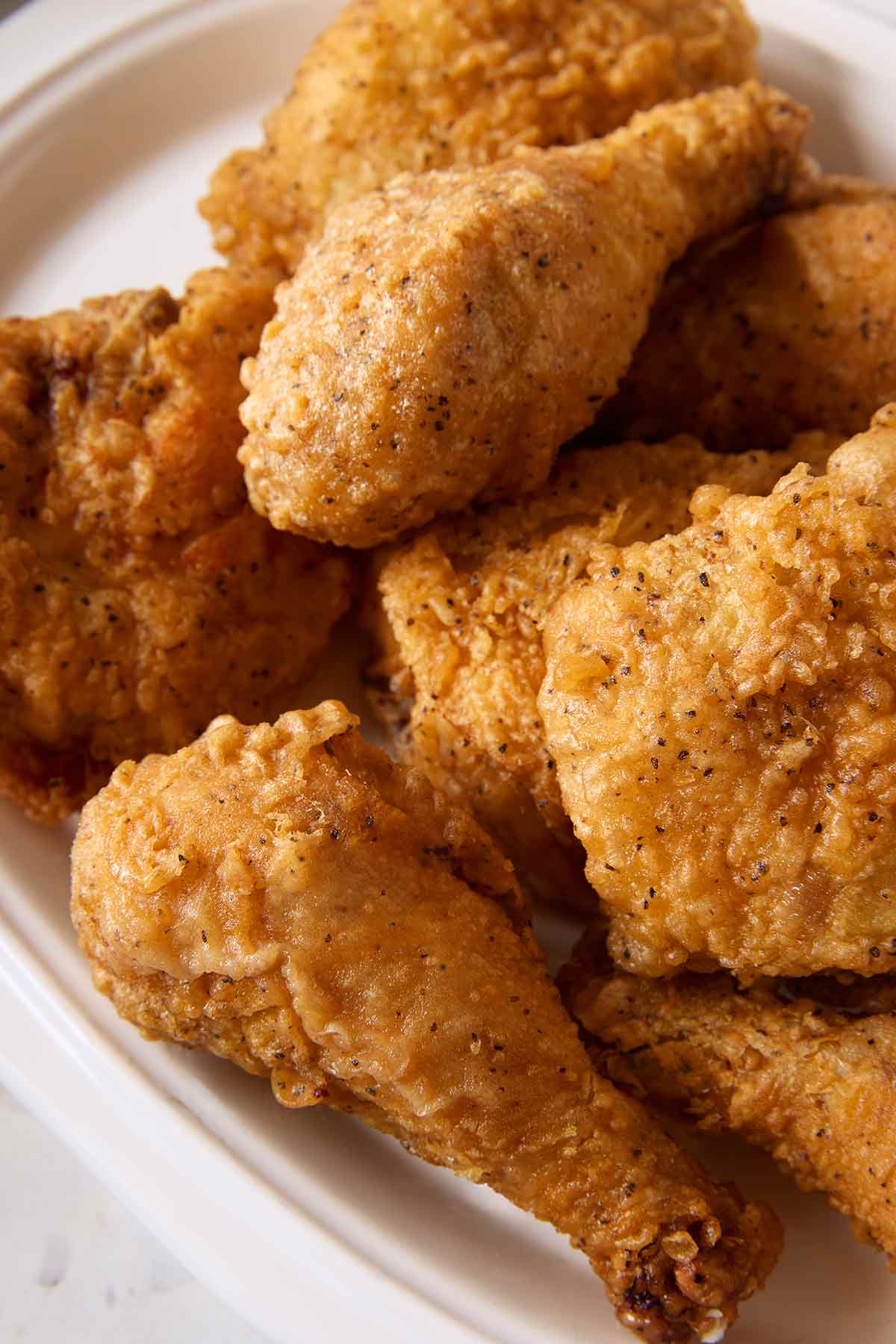
For Spicy Fried Chicken
Craving more heat? I got you! Add a teaspoon each of garlic powder and onion powder to the batter for a savory kick. For a real flamethrower flavor, up the cayenne or even splash some of your favorite hot sauce into the wet mix. For a KFC vibe, add a tablespoon of MSG; I use Accent.
How to Make Crispy Old-Fashioned Fried Chicken (Best Ever) | Julia at Home
FAQ
What is crispy Juicy fried chicken?
Calling this recipe crispy juicy fried chicken is really an understatement to how incredible this fried chicken recipe is. Using a buttermilk brine ensures the chicken is impossibly juicy all the way through and the seasoned flour coating results in a perfect golden, crisp crust. Finger licking good has never tasted this great.
How do you make crispy fried chicken?
It’s science made easy, producing the best crispy fried chicken recipe ever! Whisk buttermilk, buffalo sauce, lemon juice, Dijon mustard, and 1 tablespoon salt in a large bowl, or divide into more than one large plastic bag. Add drumsticks, making sure to cover them in the mixture.
How do you make fried chicken tender?
Moreover, adding an acidic ingredient such as buttermilk, pepper sauce and/or lemon helps to tenderize meat. For that reason, I prefer a wet brine. I can add salt and acids into the wet brine at the same time, making the crispy fried chicken moist, juicy and tender inside.
What makes good fried chicken?
The secret to good fried chicken lies in several key factors: Marination: Soaking the chicken in a seasoned marinade or buttermilk tenderizes the meat and infuses it with flavor. Seasoning: A well-seasoned flour mixture or batter is crucial for a flavorful crust. Use spices and herbs such as paprika, garlic powder, salt, and black pepper.
How do you cook fried chicken in a frying pan?
Take the temp of your fried chicken: Insert an instant-read thermometer into the chicken to make sure it is fully cooked before moving on to the next batch. The USDA recommends cooking chicken to a minimum of 165 degrees F. For more, see our complete how-to instructions on deep frying. Photo by Meredith. VIDEO: How to Make Fried Chicken
Can you fry a full chicken breast?
Frying full chicken breasts is usually a problem because lean breasts tend to dry out by the time they cook all the way through. This results in a dry, chalky texture that no one likes. Thankfully, I just discovered a method that allows frying full breasts in a matter of minutes and the meat comes out exceptionally tasty, tender and juicy.
What is the secret of juicy fried chicken?
Fried Chicken Secret #1: A Salty Marinade = Juicier Meat
A standard brine is a solution of salt dissolved in water (around 6% salt by weight). As chicken sits in a brine, the salt dissolves proteins in the meat’s muscle structure, loosening it and allowing it to retain more moisture as it cooks.
What is the secret to juicy chicken?
Chicken becomes juicy through proper preparation and cooking, which primarily involves brining or marinating to add moisture and tenderness, pounding to ensure even thickness for uniform cooking, and resting after cooking to redistribute juices. Choosing the right cooking method, such as basting, poaching, or a sear-and-bake approach, also contributes to retaining moisture.
What is the secret to tender fried chicken?
Don’t skip the brine.
But if you can plan ahead, make time to soak the poultry in a brine — a solution made from water, salt, and sugar—before you fry it. This will help deepen the flavor of the meat and keep moisture inside the chicken, resulting in a juicy, tender result.
